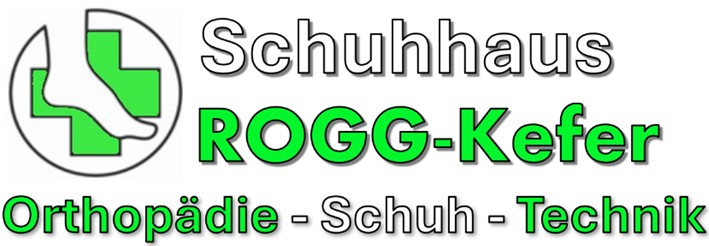Cause-Effect Graph graphically exhibits the connection between a given end result and all points that manipulate the finish result. It is also recognized as Ishikawa diagram due to the method in which it appears, invented by Kaoru Ishikawa or fish bone diagram. Cause-Effect Graph can turn into complex and difficult to implement in large-scale techniques with numerous inputs and outputs. As the system’s complexity will increase, the cause-effect relationships could turn out to be extra intricate, making it tough to construct an accurate and manageable graph. This can lead to elevated effort and time required to derive test cases successfully. Begin by understanding the system under take a look at and identifying its inputs and outputs.
With Smartdraw, You Presumably Can Create Many Various Kinds Of Diagrams, Charts, And Visuals
It is a tabular representation of all attainable inputs and outputs for a specific https://www.globalcloudteam.com/ system or element, primarily based on the causes and effects recognized in the cause-effect graph. A developed software goes through varied testing levels to validate whether it is satisfying all the necessities and circumstances. In the black field strategy, the generated output from enter knowledge sets are verified. The cause impact graph is among the techniques which comes underneath the black field testing.
The Last Word Information To Cause And Effect Diagrams
Use nodes to symbolize inputs and outputs, and edges to characterize the cause-effect relationships between them. Analyze the system’s specs, necessities, and habits to discover out these relationships accurately. Cause-Effect Graph allows testers to determine potential defects and bugs early in the growth cycle. By analyzing the cause-effect relationships, testers can pinpoint eventualities where particular inputs lead to undesired outputs.
Getting Ready
- A clear and exactly articulated impact will produce extra relevant theories, better causal relationships, and a simpler model for the selection and testing of theories.
- This equips you with in-depth data of Software Trigger Impact Graph.
- It says that if both the conditions C1, and C2 hold true or equal to 1, then the event E1 is the same as 1, else E1 is equal to 0.
- Assemble a cause-effect diagram when you have reached the purpose of developing theories to information the characterize step.
- Cause-effect graphing method is used as a outcome of boundary value evaluation and equivalence class partitioning strategies do not think about the combos of enter circumstances.
- The best way to understand cause and effect diagrams is to take a look at some examples of cause and impact diagrams.
Lack of coaching in reading the catalog will create reading errors, but when the errors come on the keying stage, no amount of coaching on use of the catalog will do any good. Whenever one sees “lack of training” (or lack of anything for that matter) on a C-E diagram, one ought to ask two questions. And second, how does that lack cause the issue being explained on the moment?
We have noted that cause-effect diagrams current and manage theories. Solely when theories are tested with information can we show causes of noticed phenomena. The cause-effect diagram helps organize the search for the causes, nevertheless it doesn’t establish the causes.
It could also be acceptable to hunt theories from extra individuals familiar with that element of the process. The effectiveness of Cause-Effect Graph closely relies on an intensive understanding of the system being tested. Testers have to have a clear understanding of the system’s specs, necessities, and habits to accurately identify the cause-effect relationships. Lack of sufficient data about the system can lead to incomplete or incorrect cause-effect graphs and, consequently, inadequate take a look at coverage.

An effect is an output situation or state of change within the system that’s caused by an enter condition. By utilizing Cause-Effect Graph, testers can reduce redundancy in check instances. The method helps in eliminating repetitive test instances by specializing in the unique mixtures of causes and results. Completely Different sorts of causal maps could be distinguished particularly by the sort of information which may be encoded by the hyperlinks and nodes. One necessary distinction is to what extent the hyperlinks are meant to encode causation or (somebody’s) belief about causation.
So whenever we need to confirm some crucial eventualities consisting of combinations of enter criterias, then the cause impact graph is used. The graph obtained is converted into a choice table which in turn can be used to design the take a look at instances. The main benefit of the trigger effect graph technique is that it helps to detect wherever there exists incomplete or unclear necessities.

When diagnosing the trigger of an issue, a cause-effect diagram helps to organize numerous theories about root causes and presents them graphically. These are the best and most typical practices when creating cause and effect diagrams. This concludes our comprehensive take on the tutorial on Software Program Cause Impact Graph. We’ve began with describing what’s a trigger impact graph, how to cause and effect graph create test instances from a trigger effect graph, What are the notations utilized in cause effect graph, and an example on cause effect graph.
A cause-effect graph reveals the relationship AI in Telecom between an consequence (effect) and the components (causes) that result in it. Step 1 − Detect the causes and results from the necessities after which assign distinct numbers to them. A cause is a novel input condition because of which the system undergoes some sort of modifications.
Cause Effect Graphing is a valuable technique for functional testing that allows software program builders to understand the relationships between the inputs and outputs of a system or its part. This approach provides a visual illustration of the logical relationships between causes and results, expressed as a Boolean expression. Cause-Effect Graph permits testers to determine all possible combos of inputs and outputs, ensuring comprehensive check coverage. By contemplating the cause-effect relationships, testers can determine the minimal number of test instances required to attain most protection, optimizing the testing course of.




